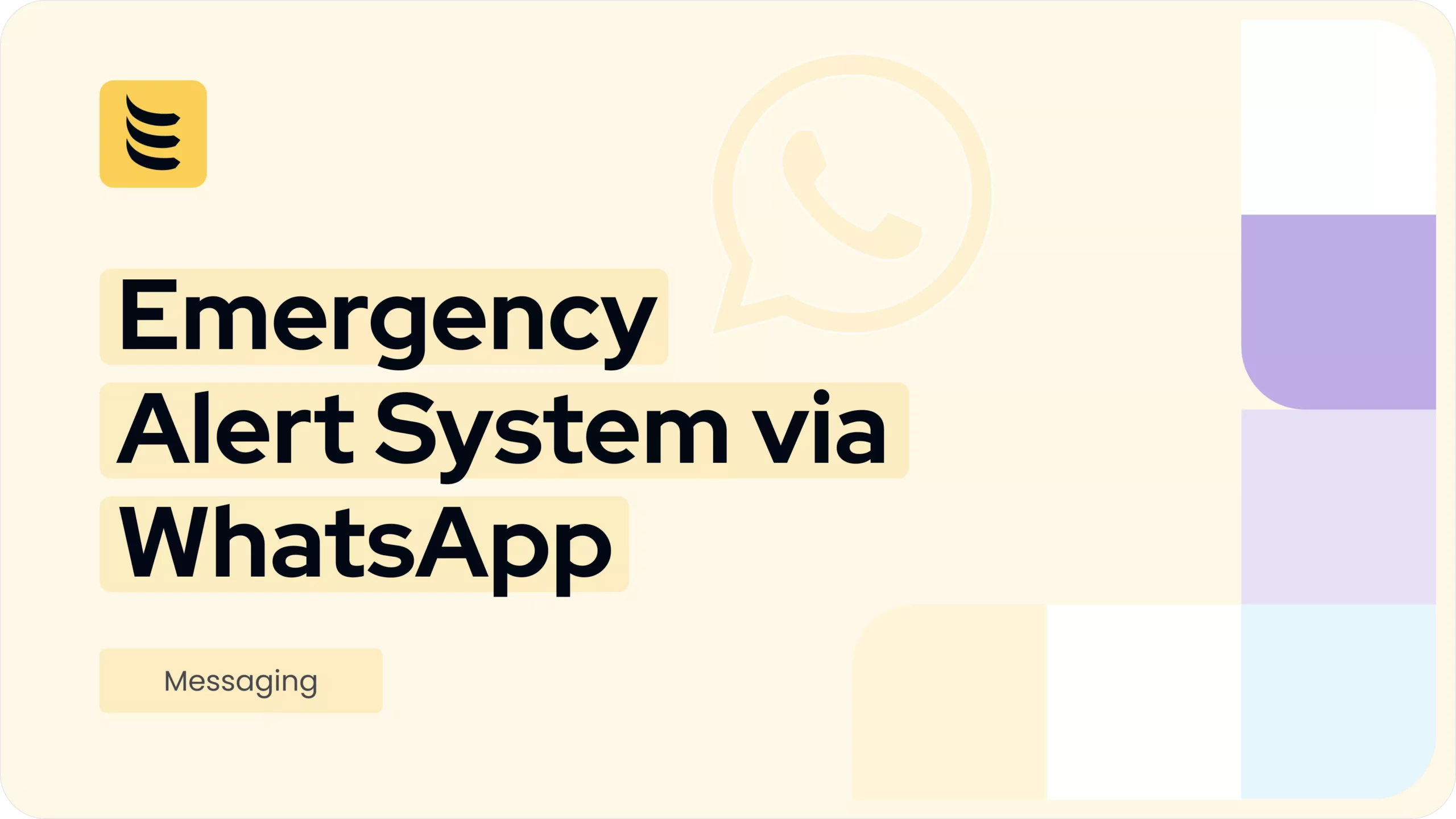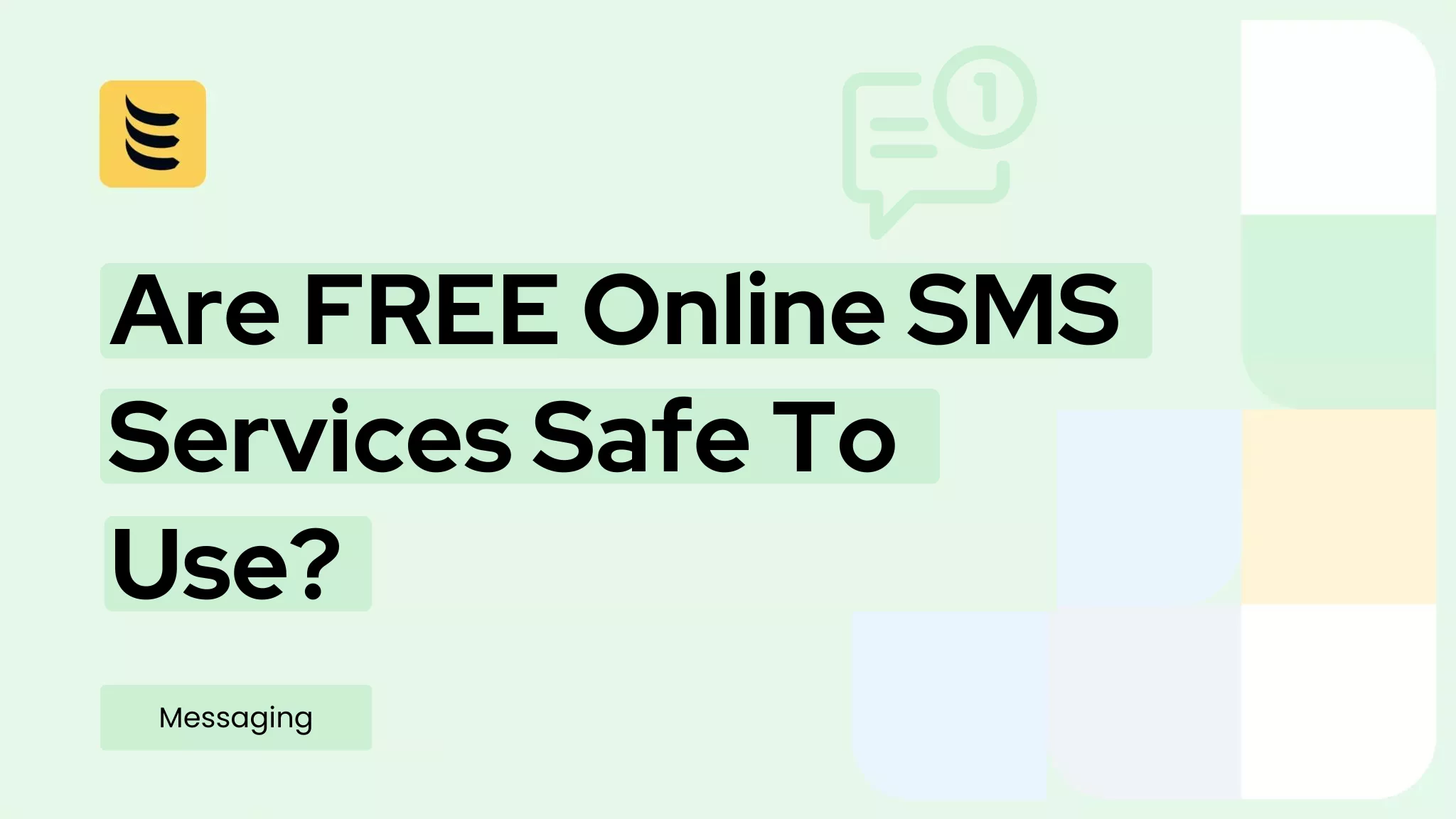Why Emergency Response is a Business Necessity
With conflict, natural disasters, and extreme climate events now a regular and almost daily occurrence, individual entrepreneurs and organizations have the need for an effective and reliable emergency alert, communications, and information distribution system. This fulfills both the need to keep customers and stakeholders up to date with the latest developments and prescribed courses of action and the obligation to provide these parties with the resources they need to cope with extraordinary circumstances.
This emergency response system needs to be secure, reliable, capable of real-time communication – and with enough coverage to extend to all areas where the enterprise has an active interest.
The WhatsApp messaging platform has around two billion active users, operating from 180 countries. It’s the world’s third most popular social platform and a trusted medium of communication to which users will readily respond. Interactions on WhatsApp undergo end-to-end encryption, safeguarding user privacy, and two-way, real-time communications are possible.
For commercial users, WhatsApp Business requires companies to pass an approval process before creating a branded business profile. This assures consumers who engage in contact with these brands that they are dealing with a source of information that is verified and trustworthy.
Features that users can leverage for incident reporting and emergency alert communication make WhatsApp a valuable resource in the crisis management arsenal of any enterprise.
Form succesfully sent ;)
How to Use WhatsApp as an Emergency Alert System
There are a number of ways that you can use WhatsApp as an emergency alert system and crisis management tool. Among the features and capabilities that WhatsApp provides for this purpose are the following:
Issue Mass Communications
An API is an Application Programming Interface, which is a set of protocols and tools that enables software applications to send and receive text messages programmatically. With the WhatsApp Business API, businesses and organizations can establish a direct line of communication with their stakeholders.
This ability enables organizations to send out mass alerts when unforeseen events occur. Enterprises on the WhatsApp platform can issue these emergency alerts to their employees and customers who have opted in or subscribed to receive messages from the brand or, more widely, as a general public announcement.
With WhatsApp messaging in real-time, recipients can instantaneously access these emergency alerts, increasing the chances of reacting to events promptly and taking all the necessary precautions.
Note that users of the free WhatsApp Business application are limited to sending out mass messaging to only 256 contacts at a time. Any organization wishing to broadcast emergency mass messaging to more people than this will need to consider one of the paid options available under the WhatsApp Business Cloud API.
This is the cloud-based edition of WhatsApp Business API or on-premise API, which is hosted by Meta (the parent company of WhatsApp). Organizations can use Meta’s developer resources to create their own in-house business messaging tools or use the expertise of a Meta-approved official Business Service Provider (BSP).
Mass communication through this option must adhere to the WhatsApp messaging limit Tiers. These range from Tier 1 (1,000 unique WhatsApp message recipients per day) through Tier 2 (10,000 unique WhatsApp message recipients), Tier 3 ( 100,000 unique recipients), to Tier 4 (unlimited WhatsApp message recipients per day).
Prices for using this mass messaging facility vary by geographical region.
Recipients in all cases must have given active opt-in consent to receiving messages from an organization through its WhatsApp number. In addition, all messaging (whether drafted internally, or subcontracted to a BSP) must conform with WhatsApp’s own standards for business communications.
Use Two-Way Communication to Engage in Critical Dialogue
The WhatsApp Business API enables two-way communication. So using WhatsApp, crisis managers can engage in direct conversations with responders on the ground reacting to ongoing events, or individuals who need assistance.
With a two-way flow of information and reactions, organizations can use their WhatsApp emergency alert and communications system to gather crucial information on the current crisis, clarify essential details, and provide resources and reassurance to their contacts.
Facilitate Rescue and Relief Operations
Emergency services and public safety agencies can use WhatsApp to send emergency messages to people in a particular geographical area, to issue critical advice and instructions. For example, mass communications can direct communities in disaster-stricken areas on the best routes to choose for safe evacuation, or the location of drop-off points for food, medical, and household aid.
Relief coordinators can use a GIS-based graphical user interface to map the geographical coordinates and phone numbers of their response teams. In this way, they can improve resource allocation and better prioritize their rescue and relief operations.
Gather Information from the Field
Using WhatsApp’s multimedia messaging tools, individuals in the field can send text messages, images, videos, and location data to report incidents in real time. This kind of reporting can provide vital decision-making information for coordinators in the enterprise crisis management center.
Within the emergency response command center, organizations can deploy WhatsApp chatbots to relieve the pressure on human staff by providing automated responses to Frequently Asked Questions, and to make knowledge base and resources instantly accessible to those who need them.
Get Specific with Targeted Communications
The WhatsApp group messaging and Broadcast facilities enable organizations to segment their message recipients according to various criteria, such as location, or demographics. Response coordinators can categorize recipients into different broadcast lists.
For emergency alert and crisis management purposes, this allows enterprises to craft and direct messaging to specific groups, such as employees, the residents of a particular area, or the stakeholders in a particular project.
Integrate WhatsApp with Incident Management Software
Integrating WhatsApp with your existing incident management tools facilitates automated ticket creation, tracking, and escalation – and helps reduce the stress burden on your response staff. Capturing WhatsApp reported incidents within the larger incident management framework of the organization helps streamline the reporting and incident handling processes.
| Component | Description | Considerations |
| WhatsApp Business API | Official access for reliable, scalable messaging. Requires partnering with a Business Service Provider (BSP) and a dedicated phone number. | Avoid unofficial methods. Choose a reputable BSP. Manage message templates and compliance. |
| User Database & Opt-in | Collect user phone numbers and ensure explicit opt-in to receive alerts. Segment users for targeted alerts. Securely store and manage data, complying with privacy regulations. | Implement a clear opt-in process. Provide options for users to manage their preferences. Regularly review and update data. |
| Alert Triggering | Automated triggers based on events (e.g., sensors) or manual triggers by authorized personnel. Use pre-written message templates for common emergencies. | Integrate with monitoring systems. Establish clear protocols for manual alerts. Ensure templates are up-to-date and accurate. |
| Message Content & Format | Clear, concise, and accurate information. Convey urgency without panic. Utilize multimedia (images, videos, location pins). Consider multilingual support. | Prioritize essential information. Verify accuracy before sending. Design for easy readability on mobile devices. |
| Delivery & Monitoring | Reliable infrastructure for sending messages. Monitor delivery status. Implement a feedback mechanism for users. | Ensure stable internet connection. Track delivery rates and identify any issues. Allow users to acknowledge receipt of alerts. |
| Two-Way Communication | Enable user responses (e.g., “I am safe”). Provide a channel for questions and assistance (chat support). Monitor conversations in real-time. | Design pre-defined response options. Train personnel to manage incoming messages. Implement a system for prioritizing urgent requests. |
| Testing & Training | Regular system tests and emergency drills. User education on opt-in, emergency procedures, and responding to alerts. | Establish a testing schedule. Simulate various emergency scenarios. Provide clear instructions to users. |
| Legal & Ethical | Comply with data privacy regulations. Ensure alert accuracy. Understand legal implications and liability. | Consult legal counsel. Implement data security measures. Establish clear guidelines for message content. |
| Integration | Integrate with emergency services and other communication platforms (e.g., SMS, social media). | Establish protocols for information sharing with emergency services. Ensure compatibility with other systems. |
Making WhatsApp Part of a Holistic Emergency Response Strategy
We have already alluded to the benefits of integrating WhatsApp with your existing incident management tools. Including WhatsApp as part of a larger crisis communications platform can provide all of the advantages that WhatsApp Business has to offer, in addition to the enhanced feature set of a dedicated crisis management system and emergency communications tool.
With an enterprise emergency communications platform for example, response coordinators can distribute mass notifications to a limitless number of users. Organizations can schedule mass notifications ahead of time, or send them out in real time. Notification options may include push messages, email, SMS, phone calls, and web alerts.
Precautions and Caveats when Using WhatsApp
Many traditional emergency communication solutions charge per message, or have high setup and maintenance costs. In contrast, by using internet connectivity, WhatsApp can offer a more cost-effective alternative – especially if the organization has to deal with a large volume of messages, or a prolonged emergency situation.
However, WhatsApp’s deep reliance on internet connectivity can be a potential point of failure for an organization’s emergency response. In a crisis situation, network infrastructure may become overwhelmed, compromised, or even completely inactive, rendering internet-dependent resources like WhatsApp redundant and inoperable.
For an emergency alert system that’s truly up to the challenge of coping with any situation, you therefore need a fallback option, when it comes to communication. SMS text is one such option, using a time-tested technology that doesn’t require the internet, and is instantly accessible on devices ranging from the most fundamental of phone handsets to the smartest of today’s hardware.
For example, IDT is one of the world’s most trusted global telecom partners, and a leading voice connectivity provider in the industry. As a division of IDT Corporation, IDT Express is focused on delivering wholesale Voice, DIDs, and Global A2P SMS services to small to medium size businesses across the globe.
Application-to-Person or A2P SMS is quickly becoming a preferred channel for enterprises to engage customers in a personalized, timely and efficient manner. IDT Express offers a secure, highly reliable Wholesale SMS gateway service enabling businesses to provide outbound one-way A2P communications. IDT’s state-of-the-art platform adheres to the highest security and operational standards.
With the IDT Express SMS API, you can seamlessly build customer journeys by fostering interactive conversations, all within the framework of your app. Swiftly integrate IDT’s carrier-grade platform into your current systems or applications, via a user-friendly wizard-driven code generation process that is fast and effortless to utilize.
To find out more about how IDT Express’s SMS gateway technology, SMS Portal, and SMS API can work with WhatsApp to enhance your organization’s emergency alert system, visit our website, or book a demo.





One Response
necesito ese sistemas para una linea de emergencias